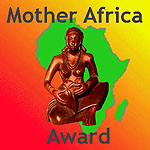
|
|
MAURITANIA

|
|
|
|
|
Other great Links
|
|
More Links
|
|
|

|
|
|
Official Name(s)
|
Al-jumhuriya al-Islamiya al-Muritaniya
|
|
Located
|
West: Morocco, Mali, Senegal
|
|
Capital
|
Nouakchott
|
|
Head of State |
President Sidi Mohamed Ould Cheikh Abdallahi
|
|
Area
|
1,030,700 sq km
|
|
Population
|
2.5 million
|
|
Growth rate
|
2.6%
|
|
Official language
|
Arabic, French, Hassaniya, Soninke & Wolof
|
|
Currency
|
Ouguiya (UM)
|
|
GNP per capita
|
$1,540
|
|
Inflation
|
3.5%!
|
Airlines
(advertise here)
|
from Europe: Royal Air Maroc
from Asia: ________________
from USA: ________________
|
Hotels
(advertise here)
|
Names & Rates per night
______________________
______________________
|
|
USAfrica Agent
|
______________________
|
|
Country Advertiser
|
If you want to become
the Country Advertiser
your logo comes here.
|
|
|
Most of Mauritania forms part of the Sahara. There is a good/bad chance that slavery still exists in the east. In the past Mauritania lay on one of the most lucrative trade routes in West Africa. It came under control of the Almoravid dynasty of Morocco, and later of the Arabs. Ultimately, France took control of Mauritania and maintained it till Mauritania's independence in 1960. During the Saharan droughts in the 1970's, Nouakchott became a major refugee center. Also, rapid urbanization and mass migration to the city resulted in an increase in the city's population. Nouakchott is focussed around a square called the Place de l'Independence. The University of Nouakchott is located in the city, founded in 1981. There is an industrial area in the city along with a port near the town.
Economy:
Although Mauritania's economy has become substantially liberalized since the early 1980s, the economic structure still presents a sharp contrast between a relatively small modern sector and traditional subsistence sectors. Mauritania has a very narrow economic base, with an industrial sector dominated by mining and fisheries activities, which together provide all export earnings, and a rural sector which employs an estimated 64 percent of the labor force. Despite considerable changes since independence, its economy remains vulnerable to external shocks, including climatic changes and related plagues such as locusts, and fluctuations in world prices for its principal exports. The development objective of the Government's reform program is to reduce poverty through accelerated private sector-led growth, by encouraging a stronger response from the rural sector, developing basic urban infrastructure, promoting private sector development, encouraging employment creation and modernizing the public sector.
History:
Mauritania is a sparsely populated country at the western extremity of the Saharan desert. Only the southern extremity supports rain-fed vegetation (more than 90 percent of the land surface is desert, with less than 200 mm rainfall per year). The population was estimated at 2.6 million in 1999, with a growth rate of 2.7 percent per year. At independence in 1960, Mauritania was essentially a nomadic society and only 5 percent of the population lived in urban conglomerations. Due to heavy rural-urban migration, particularly over the last decade, more than half the population now lives in urban centers. Mauritania's ethnic mix reflects the country's geographical position, comprising about 50 percent Moors and 50 percent black Africans. Social indicators (nutritional levels, food security, income, access to water) confirm that 50 percent of Mauritania's people continue to face difficult living standards and live below the poverty line of one dollar a day. A new constitution was approved in mid-1991 after which political parties were legalized and voters registered. Presidential elections were held in early 1992 and Colonel Ould Taya was elected. He was re-elected for a further six-year term in December 1997 with 90 percent of the votes cast.
Enabling us to improve the quality of the content, if you have additonal information, remarks or suggestions, please share it with us by e-mail.
Last update: 24 April 2008
|
|